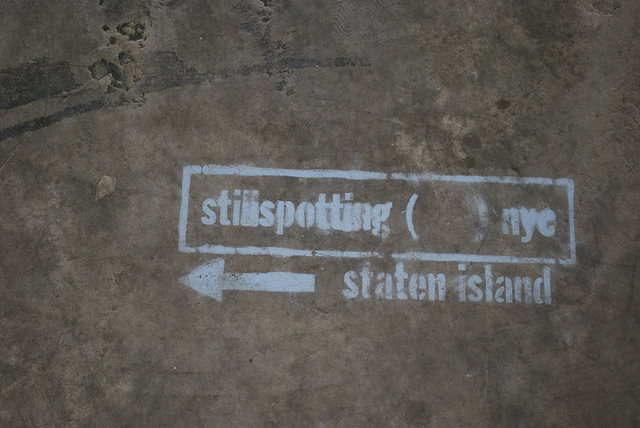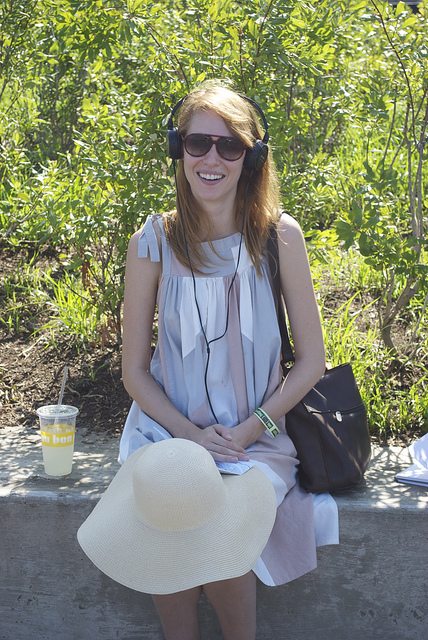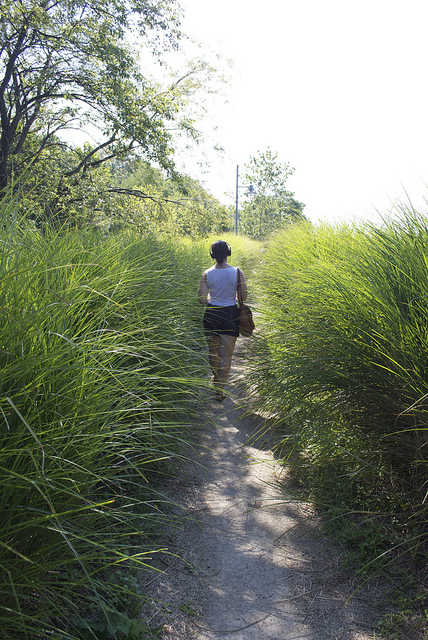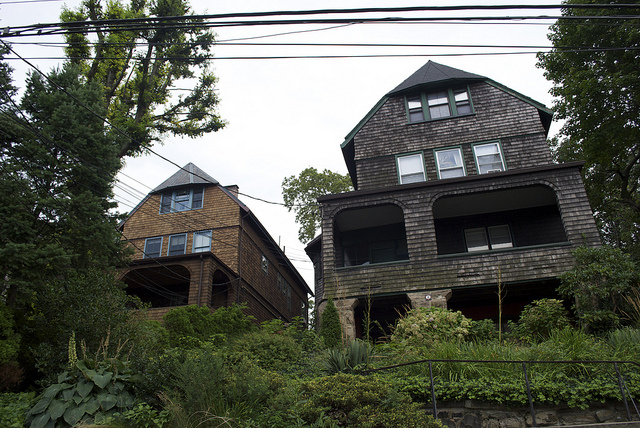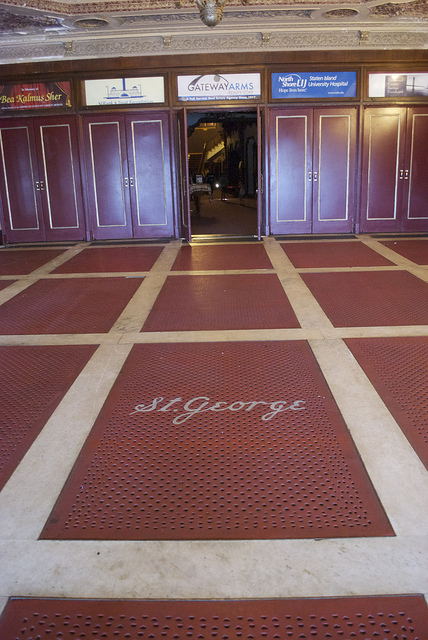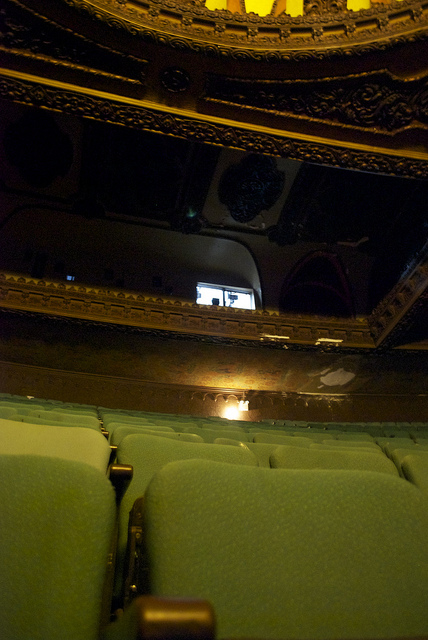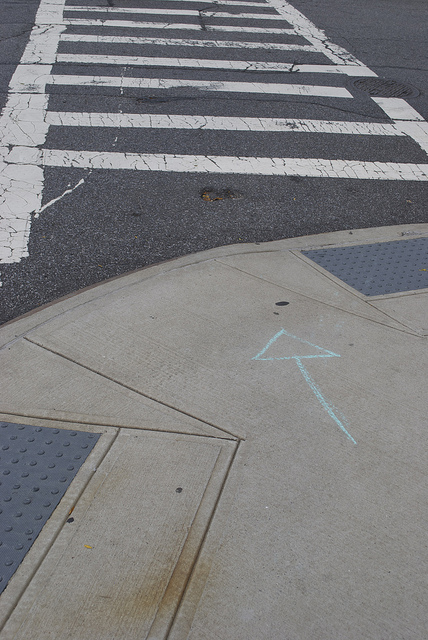The concept of peace and quiet, while living in any one of the five New York boroughs, can be pretty short-lived. That is, until you stumble on stillspotting nyc, the Guggenheim Museum’s two-year project that takes their architecture and urban studies programming out into the streets and transforms them into places to walk, sit, listen and look. Last Saturday I found myself traveling to Staten Island to experience one of their latest installations, Telettrofono. Created by sound artist Justin Bennett and poet Matthea Harvey, the audio walking tour weaves history with fantasy as you walk along the waterfront and residential areas of Staten Island.
I stepped into the temporary headquarters in the St. George ferry terminal ready to be inspired. Greeted with smiles, the volunteers in blue stillspotting shirts got me all set up; I gave them my ID, they gave me headphones and an iPod. Shirley, she looked in charge, handed me a map and said with a smile, “Maybe you’ll see a mermaid.”
Mermaid?
Exiting out to the waterfront park I looked at my sidekick, we nodded the go-ahead, and pressed play, beginning our journey back to 1860. Voices came on through the headphones, instructing us to turn off all 21st century gadgets (you know who you are), and to follow the path closest to the water. Then the voices stopped and the sounds came in: a turning radio knob, static and water, lapping at my ears like gentle waves. It was a bright, hot day and I moved slowly, taking in my surroundings, both real and imagined.
Throughout the walk we learned the story of Antonio Meucci, a Staten Island resident of Italian birth, and his wife Estelle. In this version Estelle, a mermaid who loves sound, is romanced by Antonio and wooed onto land. Meucci, in some history books, is said to be the inventor of the first telephone, called the telettrofono, which he constructed so he could communicate from his lab in the basement of his home, with his wife on the 2nd floor. Antonio filed countless patents, and we heard of several of them on our walk, things like the wave metronome, a method for manufacturing effervescent drinks, wickless candles and a method to test milk. But the telephone eluded him and the patent he needed to file was never filed. Years later Alexander Graham Bell took that claim to fame.
There were moments where I walked in silence, where I heard a man’s voice or a woman’s voice, sometimes voices yelling. I looked behind me, only to realize the noises were coming from my soundwalk. I came upon the Staten Island 9/11 memorial, cream-colored stone profiles, one for each person lost, and took the time to read their names. Then I continued on and left the cement path for a dirt trail, edged by tall reedy grasses. I brushed past them with my bare arms, enjoying the feel of something tangible.
At a brief pause in our audio we were greeted by a stillspotting escort and taken into the Atlantic Salt Company, a run down industrial property, now a depot for road de-icing salt for New York State, New Jersey, and Connecticut. The mounds of salt, leftovers from our uncold winter season, were covered in black tarps with colored weights. The tall brick chimney, no longer in its original use, now looked to be a cell tower.
Our path out of the salt mines, to the tune of track three, angled up and out. I was momentarily distracted by a produce market and shiny cherry tomatoes, we paused our tracks and stopped. I purchased a basket and sampled a cherry, alongside a sign that said, “These are samples, not lunch.” It wasn’t a part of the audio, but it felt like it had been placed just for me.
As we continued our walk we angled up, away from the water, and into the Richmond project, a somewhat ramshackle neighborhood with a view of the refineries. The audio said to sit on stone benches in the square. We did. Estelle came on, telling Antonio, or maybe me, that “my kittens are hungry.” She had 24 at the time. A few minutes later I spied some cats and figured they too were planted by the artists. Or maybe Antonio?
“Switch the sky backdrop from day to night,” said track four. And just like that our day was night, at least it was in our minds. We walked past homes reached by steep staircases and surrounded by mature trees. We listened to telephone wires shaking in the wind. Kids in a playground ran past us, wet feets marking their path to their mom’s minivan. We walked up a steep, narrow staircase and came to Fort Hill Park. Instructed to stop and listen, we did. Looked up. Trees swayed in the breeze, a dog barked from a high up window.
We ended our walk inside the St. George, a theatre built in 1929 in a variety of Spanish and Italian baroque styles. A “variety” is saying it lightly. As we were escorted up the red-carpeted stairs by a stillspotting girl holding a flashlight, we spied golden statues, bullfight frescoes, curliecued balconies, and stained-glass chandeliers. (Jerry Seinfeld will be performing there in November.)
Our fact meets fiction story of Antonio and Estelle pulled me in for two hours, and left me wanting more. Following the blue arrows back to our starting point, then awaiting the ferry for Manhattan, I was a bit sad to say goodbye—to Staten Island, Antonio and to our mermaid.
The Staten Island stillspotting is now finished but you can start planning now for their final fifth edition, coming in October to the Bronx, led by Improv Everywhere. In the meantime, watch the videos from the past four installments.
All photos by Ainsley McWha.







